Information Board

- Information Board
- Composition of Taekwondo
- Poomsae
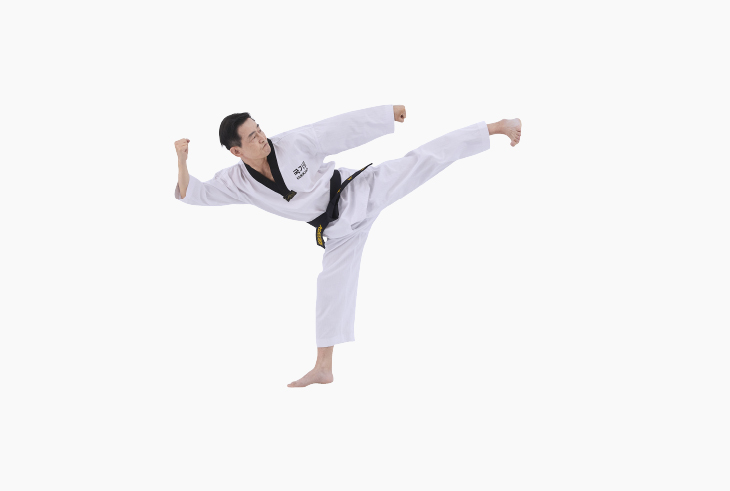
Ilyeo is a state of spiritual cultivation in Buddhism, which means “oneness,” or the
essence of the thoughts of Venerable Wonhyo from the Silla period of Korea. In Ilyeo, the dots, lines, and circles are unified. All techniques and moves are learned and performed differently. They are ultimately united with the mind and body to complete the practice of Taekwondo. Ilyeo Poomsae is based on this fundamental principle of martial art.
At this stage of practice, the practitioner learns how all movements occur and conclude in a state of detachment, beyond the artificial actions manifested through conscious thoughts.
Read more
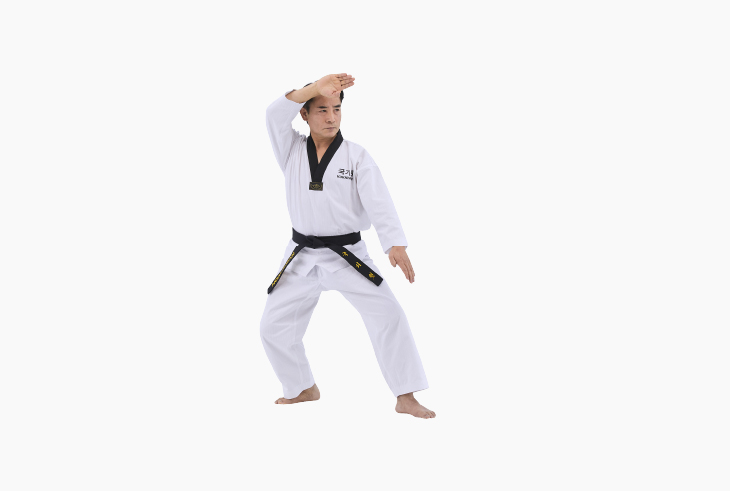
Hansu refers to big water, the source that nurtures all living things. It represents
the birth and growth of life, sturdiness and gentleness, tolerance, compatibility, and
adaptability. “Han” has various meanings, including one, many, big, center, same, full, together, gather, moment, and long. It also signifies the sky and the root of everything. Consequently, the characteristics of water — an element that cannot be broken or cut — are applied to the Hansu Poomsae.
Its Poomsae line “水” signifies water, hangaram (the bloodline of the nation) and growth. Hansu Poomsae practice teaches practitioners to understand that every move is a technique of accumulating energy, not consuming it.
Read more
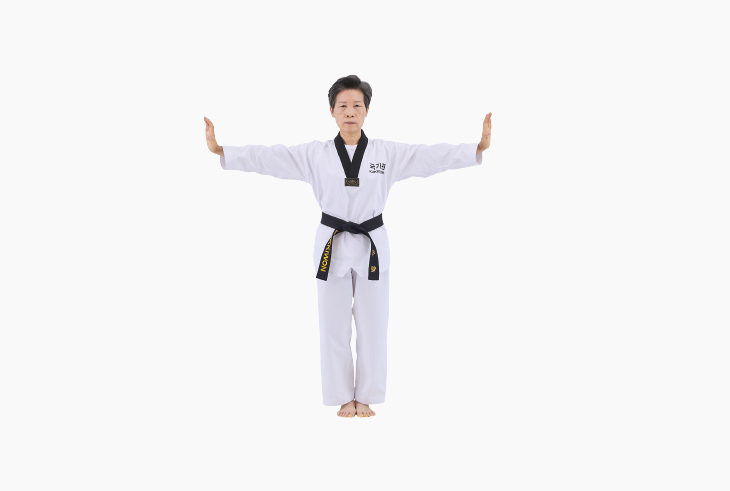
Chonkwon signifies the energy that nurtures all things, along with immutable laws, although the changes in nature and the universe are invisible. In other words, just like the laws of Mother Nature are not working randomly, people must also follow the rules of right mind and actions.
In Chonkwon Poomsae line “ㅜ,” the horizontal line at the top signifies the vast sky, while the vertical line refers to the power of light, which influences the land and its people, such as the sun, moon, and stars. Further, all things in the world, including humans, can exist only with the coexistence of centrifugal and centripetal forces. The world we live in will cease to exist if the balance of power, such as the pull and push between people, is broken.
Chonkwon Poomsae trains the body to follow the right mindset through steady practice and reach the state of Jihaengilchi — the unity of knowledge and action.
Read more
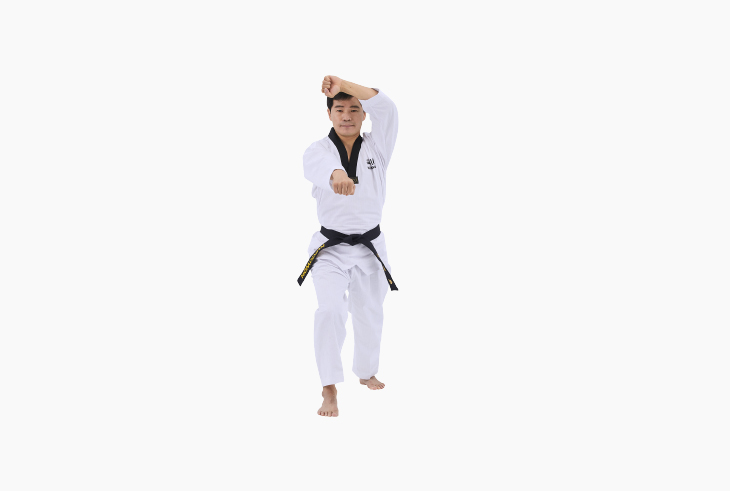
Jitae means a man with both feet on the ground to kick, walk, and jump, which represents the struggle of human life. Jitae Poomsae weaves various aspects that appear in the struggle for survival into various moves. Its Poomsae line “ㅗ” is similar to a person standing on the ground and rising toward the sky to signify people who are born, grow, and die on the land.
In the Poomsae line “ㅗ,” the horizontal line at the bottom represents the earth, and the short vertical line represented by a dot signifies the sky. The unison of the mind and body ensures that the practitioner’s body unconsciously responds to the opponent’s attack. This stage is no longer about an artificial way of judging and performing attack and defense techniques but about practicing movements in a state of self-effacement.
Read more
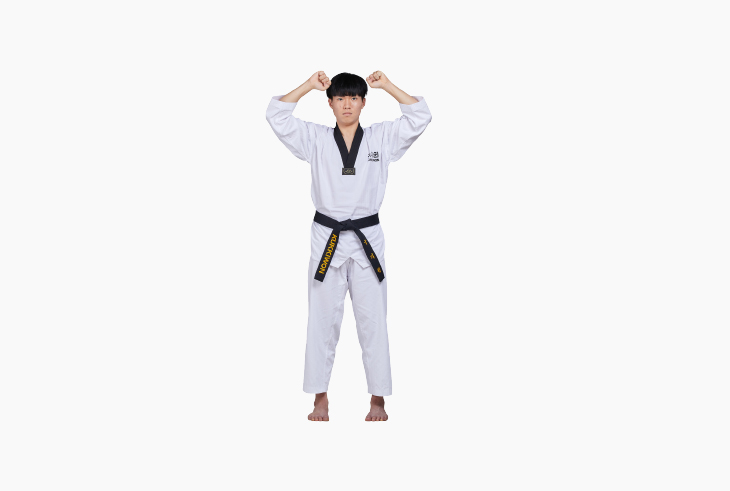
Shipjin represents the 10 creatures of long life according to Taoist ideology, including two heavenly bodies, three natural objects, two plants, and three animals: sun, moon, mountain, water, stone, pine tree, herb of eternal youth, tortoise, deer, and crane. It symbolizes the great nature, trust, desire, and love of people.
The organization of the Shipjin Poomsae line “十” is such that the center of the axis must be maintained on the centerline regardless of moving forward or backward, left or right, and attack or defense. The center of the axis refers to keeping the neck and tailbone in a straight line. Therefore, the vertical line of the cross (十) is a state wherein the strength and balance of the body are aligned with the centerline. Here, the practitioner will learn to move forward and backward or left and right seamlessly.
Read more
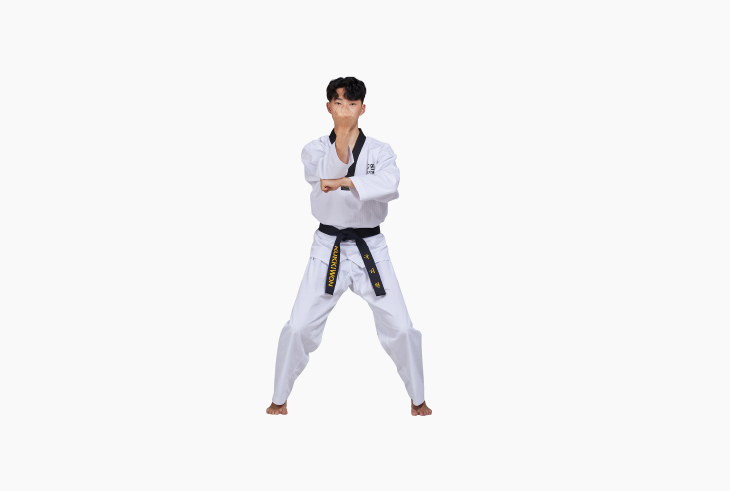
Pyongwon signifies a large land that is widespread in all directions. This represents the preservation of life as the mother of living things and the foundation of life for humans, the primate of all things. The Poomsae was formulated based on peace and struggle, according to “Bon (main body)” and “Yong (use).”This stage can be considered transitional — from martial techniques to martial arts. Once you have mastered the basic Taegeuk Poomsae series in the Yugeupja course, you will learn Koryo, Keumgang, and Taebaek—the first batch of the Yudanja Poomsae. Subsequently, you will learn a step-by-step process to combine yin and yang by connecting Jeong (body), Ki (energy), and Shin (consciousness). In other words, the body can be used freely in various forms, including several changes through practice. The variety of changing moves implies that attack and defense are carried out unconsciously and that the body can return to its original calm state without agitation even after violent movements.
Read more
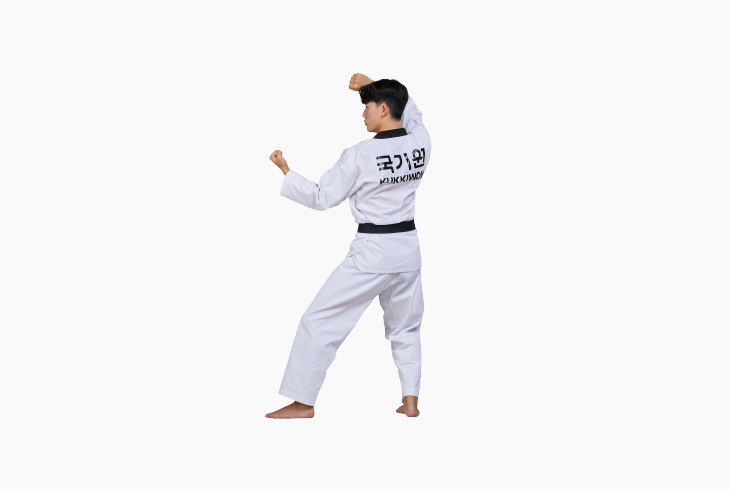
Taebaek means Red Mountain (Bright Mountain), which is the holy mountain of Asadal (Asi-Tang), where the Ancient Joseon of Korea was found. The bright mountain symbolizes the origin of the spirit and tradition, sacredness, and thoughts of Hongik Ingan. Taebaek has many different positions and names, but Mt. Baekdu is its representative place — the womb that symbolizes people. Therefore, the Poomsae was formulated based on the lofty ideal of Dangun, the legendary founder and god-king of Gojoseon — the first Korean kingdom.
Taebaek refers to a martial artist who has mastered the Taegeuk level, characterized by a high level of practice that can intentionally switch between yin and yang. Its Poomsae line follows the character of “工.” The horizontal lines of the letter “工” signify heaven and earth, and the vertical line signifies people. Therefore, it refers to a person who has trained and mastered receiving the energy of heaven and earth. It refers to a stage where all parts of the body can react instantaneously and freely to switch between defense and attack.
Read more
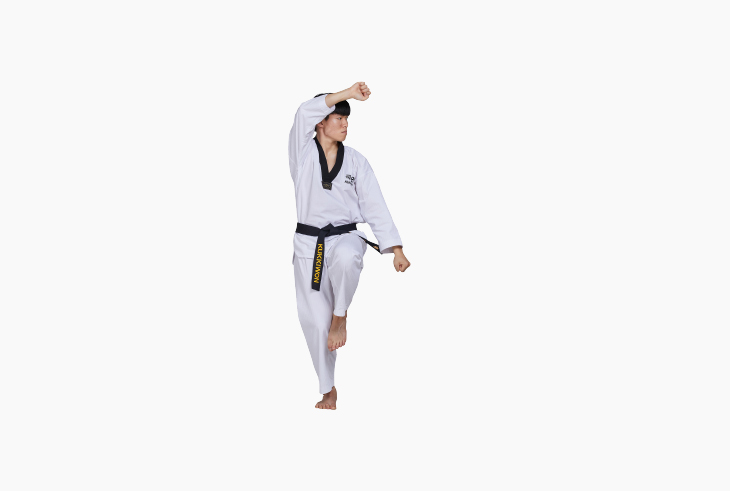
Keumgang refers to the ultimate strength and heaviness, which represents Mt. Keumgang — the energy source of the Korean Peninsula, Hobeop which refers to the protection of the Buddhaꠓdharma, and the two constitute the guardians of yin and yang. The name comes from “Keumgang Yeoksa,” which signifies the strongest warrior who is a master of martial arts, while “Keumgang”symbolizes masculinity, strength, and the indestructible. These factors are blended in the Keumgang Poomsae. Along with being the strongest, Keumgang means radiating light in all directions. When applied to the human body, it refers to the body’s state full of energy and ready to exert power with any part of the body. This is possible by the coordination of the left and right and upper and lower body to move as one. Further, it requires composure, no bias toward one side, and no recklessness, fear, or hesitation.
The Poomsae line of Keumgang follows the “山” character. The vertical line in the middle represents the central axis of the body and spine, while the short lines on the left and right signify the power crated by twisting the body left or right from the centerline. When doing Keumgang Poomsae, the practitioner learns rotational moves based on the body centerline (spine) to understand how to exert force with powerful moves while keeping the center firm like a big mountain.
Read more
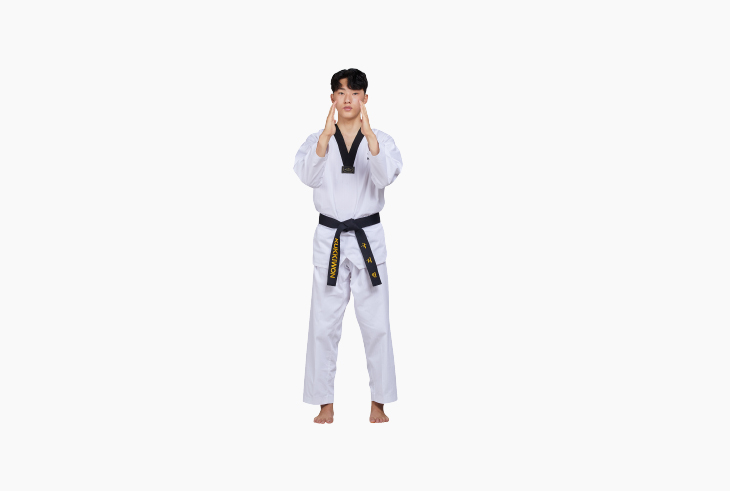
Koryo means Seonbae, which represents strong martialism and upright scholarly spirit.
The spirit of Seonbae, inherited from GoguryeoꠓBalhae-Koryo, is woven into the Koryo Poomsae. Koryo is a compound word comprising “Ko,” which means “high,” and “Ryeo,” which means “elegance, union, and passage.” Ryo is also interpreted as “shining” and is commonly used to represent “dignified” and “splendid.”
After understanding the basic eight forces through Taegeuk Poomsae practice, Koryo Poomsae trains you on how to the wield power of a whole new dimension by combining Jeong (body), Ki (energy), and Shin(consciousness) — the fundamentals of the human body.
Read more
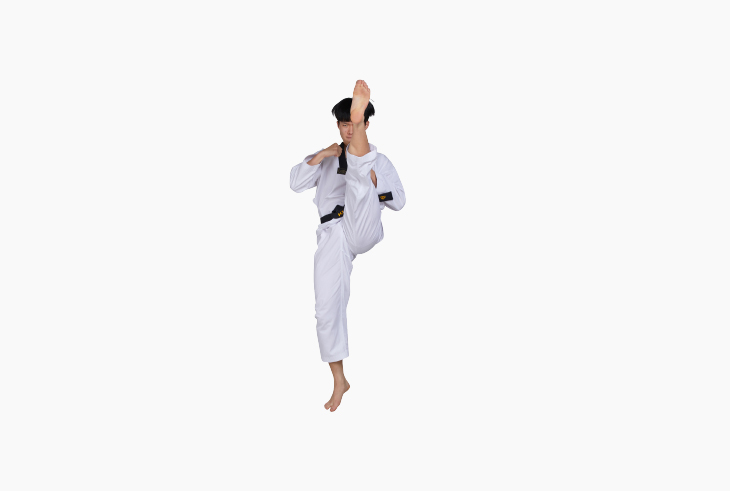
Taegeuk 8 Jang represents “Gon” in Palgwe. “Gon”symbolizes the earth ― the ground where all creatures take root and live ― with the spirit of Yin. Gon represents the abdomen that protects the internal organs in the human body. While Keon in Taegeuk 1 Jang signifies the beginning of all things, Gon symbolizes the living ground of all things ― where they grow and bear fruit. Similarly, all the human power comes from the abdomen. At this stage, you will strengthen the abdomen and train to attack using the whole body with both feet in the air. Through the organic connection of the upper and lower body, the entire seven stages are completed.
Read more